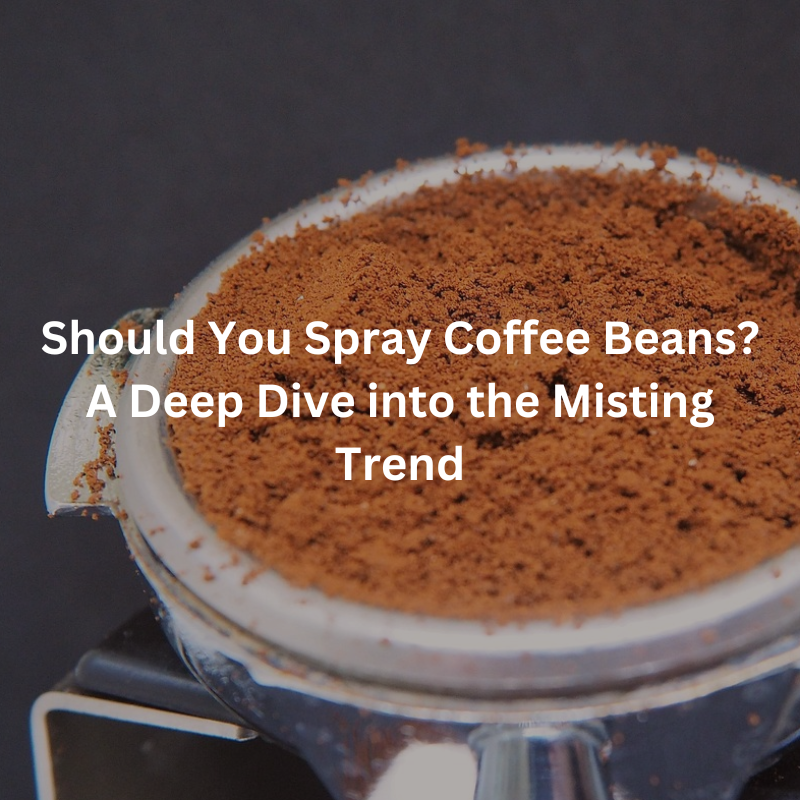Should You Spray Coffee Beans? A Deep Dive into the Misting Trend
In the ever-evolving world of specialty coffee, even the smallest tweaks to your brewing process can make a noticeable difference in your cup. One increasingly popular technique among coffee enthusiasts and baristas is spraying, or misting, coffee beans with a light amount of water before grinding. While it may seem counterintuitive to add moisture to something typically kept dry, this simple practice can have a surprising impact on grind consistency and overall flavor. So, should you spray your coffee beans? Let’s explore the reasons behind the method and whether it’s worth incorporating into your routine.
What Is Coffee Bean Spraying?
Coffee bean spraying, also known as the Ross Droplet Technique (RDT), involves applying a small amount of water—often just one or two spritzes from a fine mist spray bottle—onto whole beans before grinding. The technique was originally developed to reduce static electricity that builds up during the grinding process, particularly in high-speed grinders. Static can cause coffee grounds to scatter, stick to the grinder chute, or clump together, making a mess and affecting grind uniformity. By lightly misting the beans, static is greatly reduced, leading to a cleaner grind and improved workflow.
How It Affects Grinding and Cleanup
One of the biggest practical benefits of spraying beans is the significant reduction in static cling. When you grind dry coffee beans, especially with certain burr grinders or in dry climates, static often causes fine particles to stick to every nearby surface. This makes dosing, distribution, and cleanup more cumbersome. Spraying the beans helps mitigate this issue, resulting in a neater grind chamber, less coffee waste, and improved efficiency in your brewing process. This benefit is especially noticeable when using light-roasted beans, which tend to carry more static and produce more fines during grinding.
Does It Impact Flavor?
A common concern among skeptics is whether adding water to beans could negatively affect the coffee’s flavor or extraction quality. When done correctly, spraying does not introduce enough moisture to alter the coffee’s structure or affect its flavor. In fact, by reducing static and encouraging a more uniform grind size, the technique can improve extraction and lead to better-tasting coffee. A more even grind allows water to flow through the coffee bed at a consistent rate, extracting balanced flavors rather than emphasizing bitter or sour notes caused by over- or under-extracted grounds. As a result, spraying can indirectly enhance the final cup’s clarity and sweetness.
When You Might Not Need It
While the Ross Droplet Technique is beneficial for many brewing setups, it isn’t always necessary. Some grinders are designed to minimize static already, especially commercial-grade or high-end home grinders with anti-static features. Additionally, in more humid environments, static may be less of an issue to begin with. If you’re not experiencing any clumping, scattering, or grind inconsistency, spraying might be an extra step you don’t need. However, for those using entry-level grinders or brewing in dry conditions, the advantages can be substantial.
Best Practices for Spraying Beans
If you decide to incorporate spraying into your routine, moderation is key. Use a clean spray bottle with fine mist control, and avoid over-wetting the beans. Just one or two quick sprays are usually enough for a dose of 15–20 grams of coffee. Always spray the beans before placing them in the grinder, and give them a quick shake to distribute the moisture evenly. Overdoing it can lead to moisture buildup in your grinder burrs or bean hopper, which can affect performance or require extra cleaning.
In conclusion, spraying coffee beans is a simple yet effective technique that can improve grind consistency, reduce mess, and enhance your overall brewing experience. While not essential for every setup, it’s a valuable trick to have in your coffee toolkit—especially if you’re chasing precision and clarity in your cup. Like many things in coffee, the best approach is to try it for yourself and see if it improves your results.




